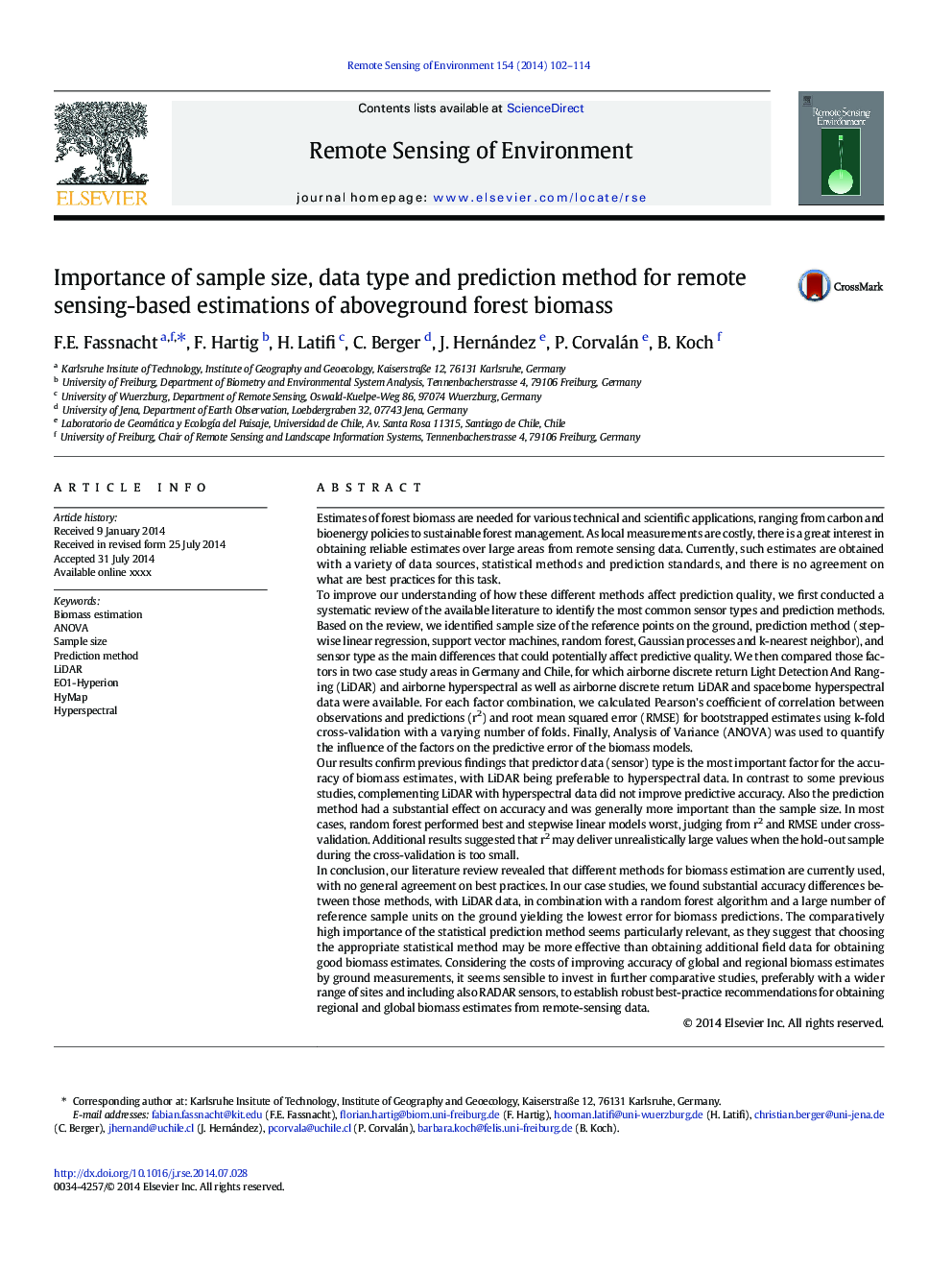| Article ID | Journal | Published Year | Pages | File Type |
|---|---|---|---|---|
| 6346421 | Remote Sensing of Environment | 2014 | 13 Pages |
Abstract
In conclusion, our literature review revealed that different methods for biomass estimation are currently used, with no general agreement on best practices. In our case studies, we found substantial accuracy differences between those methods, with LiDAR data, in combination with a random forest algorithm and a large number of reference sample units on the ground yielding the lowest error for biomass predictions. The comparatively high importance of the statistical prediction method seems particularly relevant, as they suggest that choosing the appropriate statistical method may be more effective than obtaining additional field data for obtaining good biomass estimates. Considering the costs of improving accuracy of global and regional biomass estimates by ground measurements, it seems sensible to invest in further comparative studies, preferably with a wider range of sites and including also RADAR sensors, to establish robust best-practice recommendations for obtaining regional and global biomass estimates from remote-sensing data.
Related Topics
Physical Sciences and Engineering
Earth and Planetary Sciences
Computers in Earth Sciences
Authors
F.E. Fassnacht, F. Hartig, H. Latifi, C. Berger, J. Hernández, P. Corvalán, B. Koch,
